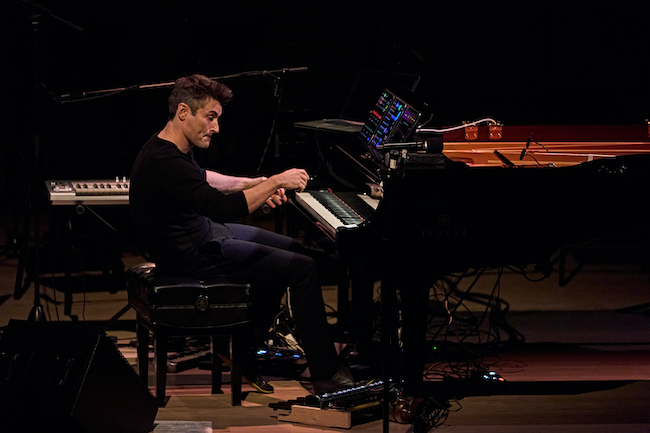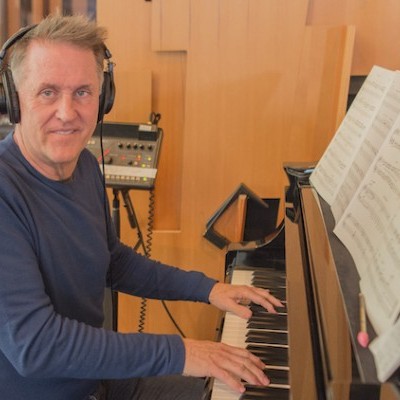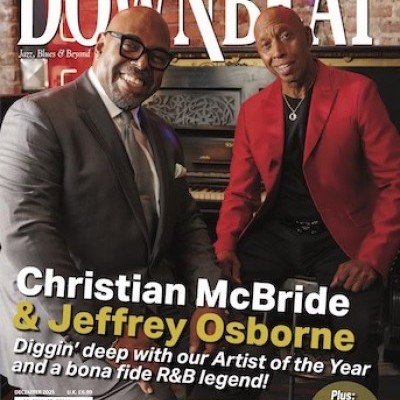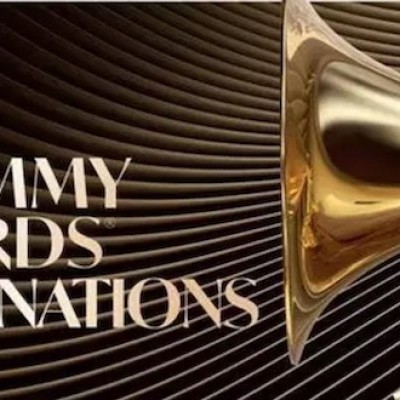Oct 28, 2025 10:47 AM
In Memoriam: Jack DeJohnette, 1942–2025
Jack DeJohnette, a bold and resourceful drummer and NEA Jazz Master who forged a unique vocabulary on the kit over his…

Dan Tepfer raised the bar on real-time algorithmic composition during his Nov. 15 Carnegie Hall debut.
(Photo: Rob Davidson)Dan Tepfer is an explorer. Armed with a monster ear for pitch, a virtuoso touch on piano and serious knowledge of computer coding, he is on a quest for meaning at what he terms “the intersection of the algorithmic and the spiritual.” After more than a decade at the grindstone, his search had, until this year, yielded material he delivered onstage accompanied by his computer-enabled piano and little else. And that was how he began his Nov. 15 Carnegie Hall debut.
That format was risky enough, dependent for success on his ability to create a set of rules — algorithms by any other name — that would coax out of the computer support for his ambitious explorations.
But later in the night, he would raise the stakes further. In what he accurately labeled a “genuine experiment,” he would enlist an orchestra and guest artists in his quest. And, in doing so, he would toy with the transcendent.
Over 90 minutes, Tepfer, bedecked in his customary black, led a journey through centuries of time and light-years of space, ultimately positing a future of colorful sounds and sights in which machine and man make beautiful music.
To reach that future, Tepfer collapsed nearly 300 years of musical history, drawing connections between the Baroque period — represented, in his words, by the “poster boy” for the algorithmic-spiritual connection, Johann Sebastian Bach — and our digitally driven age.
Like Bach — an inveterate improviser who pushed the technological and musical boundaries of his day, driving development of the pipe organ and polyphonic art — Tepfer, who has exploited the means and methods of counterpoint as much as any jazz musician, incorporated that knowledge as he raised the bar on real-time algorithmic composition.
Onstage, he appeared very much as one imagines Bach, playing and conducting, might have appeared to Baroque audiences: octopus-like, working an array of equipment assembled before him. In Tepfer’s case, that included a Yamaha Disklavier piano, among other keyboards; multiple touch screens; and multiple pedals, both digital and analog.
Commanding the computer — which he had not only programmed but, having applied soldering iron to circuit board, helped bring to life — Tepfer fashioned orchestral arrangements on the fly. Busily working his touch screens, he chose who among the 20 chamber musicians of the Knights would play, what notes they would play and how they would do so. He then digitally fed the material, via a special wi-fi network, to the players, who, in turn, sight-read it off personal screens to near perfection.
At the same time, Tepfer triggered shape-shifting graphics keyed to the underlying structure of his musical input and projected on the giant upstage wall of Zankel Hall, Carnegie’s underground space. Adding elegantly calibrated contributions toward the end were saxophonist Miguel Zenón and singer Becca Stevens. All told, the effect was of landing in that pleasurably disorienting space between acute stimulation and sensory overload.
Dubbed Natural Machines 2.0, the experiment built on the first phase of the project, which culminated in the 2019 release of the album Natural Machines (Sunnyside). As a kind of primer, Tepfer opened the Carnegie program with a series of short disquisitions, each based on an algorithm, that laid the foundation for the balance of the performance.
Musically, the most illustrative may have been one on inversion, a compositional technique Bach favored. Tepfer brilliantly rendered the first of Bach’s Goldberg Variations, punched up the inversion algorithm and the computer responded with a version that mimicked the intervallic motion of the two-part invention — but, in Tepfer’s parlance, “upside down.”
Bach’s piece, which one suspects began as an improvisation, was so well structured that, as Tepfer noted, its inversion held up as a composition on its own — one with an otherworldly quality. “It sounds like it comes from another planet,” he said, foreshadowing another piece that brought to bear the remarkable range of Tepfer’s capabilities.
That piece focused on a planetary system 39 million light-years from Earth, Trappist-1. Underpinned by Tepfer’s knowledge of astrophysics — he holds a degree in the subject from the University of Edinburgh — the piece illustrated the poetic relationship between music, math and image.
At the image’s center glowed an orange-red orb, the sun. As its seven planets appeared — one by one, outermost to innermost — Tepfer played series of repeated notes that corresponded to the frequencies of their individual orbits, which, related in simple integer ratios, resonated in a stable and harmonious pattern. Against a loop of those series simultaneously played, he spun a web of single-note lines reflected on-screen in swirling strings of pearl-like spheres. The lines built to lush chords that in due course dissolved as the image vanished into the blackness of space.
The dying of the light might have proved a bleak metaphor had it not been for a bit of wry humor Tepfer offered at the expense of the ancient Greeks, who, he noted, postulated, in their theory of the Harmony of the Spheres, that planetary systems were happier if their planets orbited harmoniously.
“They thought ours orbited harmoniously because they didn’t have good data,” he said with a smile.
Humor aside, the concert’s second half picked up on the theme of harmony, opening with a piece organized around its building blocks — triads. Aided by a visualization process called harmonography, Tepfer — now supported by the orchestra members, who, acting on his digitally delivered orders, squeezed from their strings all manner of emotion — built an improvisation that translated into multidimensional, curvilinear forms that matched the structure of their sonic counterparts.
The next piece, shorn of an organizing principle beyond that of the constraints imposed by the materials at hand, was proportionately looser — and arguably more exploratory. And while harmony reasserted itself in the following piece, “My Funny Valentine,” Richard Rodgers’ changes proved mere reference points amid the interactive flow. Singer Stevens, meanwhile, dropped Lorenz Hart’s lyrics like a velvet anchor — offering a glimpse at how pre-digital tradition might play into a post-digital future.
But it was only in the last piece, when Zenón appeared, that a more fulsome future came into focus. The strings, which up to that point had dwelled largely in arco mode, were challenged to respond with brightly articulated pizzicati, animating an algorithmic echo of Tepfer’s dead-on mirroring of Zenón’s tart phrases. For anyone mired in the drab techno-culture wars of today, the three-part colloquy — contrapuntally rigorous and vividly realized — offered the spiritually invigorating prospect of a thoroughly novel tomorrow that adroitly incorporates the lessons of the past. DB

Jack DeJohnette boasted a musical resume that was as long as it was fearsome.
Oct 28, 2025 10:47 AM
Jack DeJohnette, a bold and resourceful drummer and NEA Jazz Master who forged a unique vocabulary on the kit over his…

Goodwin was one of the most acclaimed, successful and influential jazz musicians of his generation.
Dec 9, 2025 12:28 PM
Gordon Goodwin, an award-winning saxophonist, pianist, bandleader, composer and arranger, died Dec. 8 in Los Angeles.…

Flea has returned to his first instrument — the trumpet — and assembled a dream band of jazz musicians to record a new album.
Dec 2, 2025 2:01 AM
After a nearly five-decade career as one of his generation’s defining rock bassists, Flea has returned to his first…

Nov 13, 2025 10:00 AM
For results of DownBeat’s 90th Annual Readers Poll, complete with feature articles from our December 2025 issue,…

To see the complete list of nominations for the 2026 Grammy Awards, go to grammy.com.
Nov 11, 2025 12:35 PM
The nominations for the 2026 Grammy Awards are in, with plenty to smile about for the worlds of jazz, blues and beyond.…








